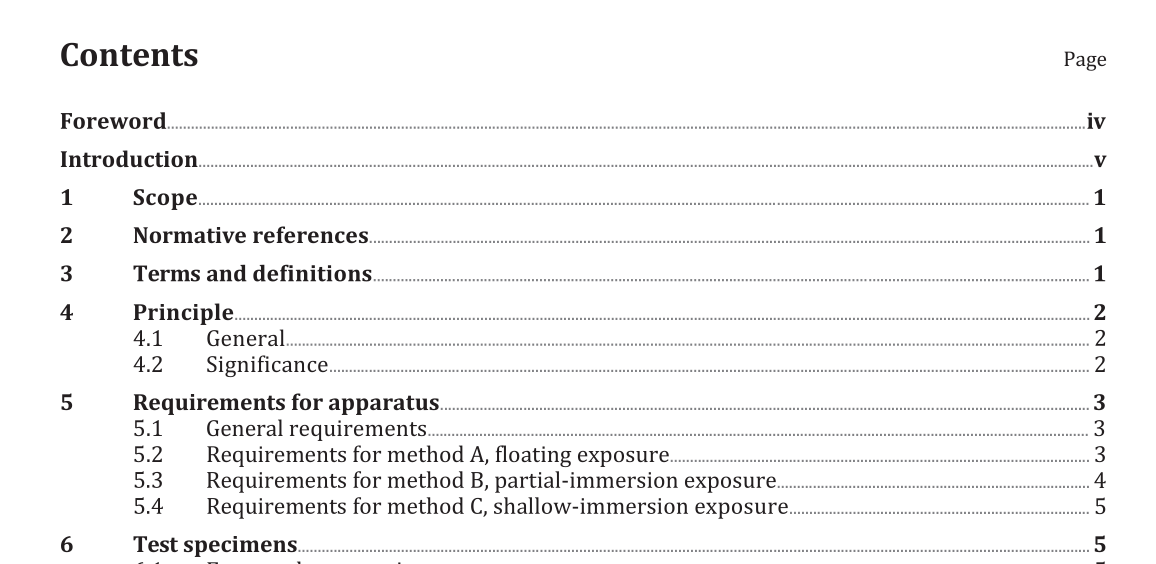BS ISO 15314:2018 pdf download.Plastics — Methods for marine exposure
1 Scope
This document describes three methods for the exposure of plastics in a marine environment. Method A covers exposures where specimens float on the surface, method B covers exposures where specimens are partially immersed method C covers exposures where specimens are completely immersed. Although intended for marine (salt water) exposure, the methodology can be used with outdoor brackish water and fresh-water exposures as well. Direct weathering of plastics on land is described in ISO 877-1, ISO 877-2 and ISO 877-3. Method A is particularly applicable to enhanced-degradability plastics where the environmental degradation under marine floating exposure is expected to be accelerated relative to that of regular plastic materials. This document specifies the general requirements for the apparatus, and procedures for using the test methods described. It lists properties that can be used to evaluate changes in plastics subjected to marine exposure. More specific information about methods for determining the changes in properties of plastics on exposure and reporting these results is given in ISO 4582.
4.1 General
Replicate specimens of the appropriate size and shape are exposed floating on the surface of water, partially immersed in water or completely immersed in water. After the prescribed exposure interval, the specimens are removed from the water and tested/examined for changes in chemical, physical and/or appearance properties. In addition, the specimens may be tested for the type and severity of microbial growth or biofouling. Unless otherwise specified, test specimens are exposed in an unstrained state. The exposure intervals at which the specimens are tested/examined are typically defined in terms of a given length of time. In some cases, however, the exposure interval may be expressed in terms of the total solar or solar ultraviolet radiant exposure. The climatic conditions are monitored during the exposure and reported with the other conditions of exposure.
4.2 Significance
The relative durability of materials in marine exposures can vary depending on the location of the exposure because of differences in ultraviolet radiation, ambient air temperature, water temperature, microorganisms, tidal action and contaminants in the water. Therefore, it cannot be assumed that results from one exposure in a particular location will be useful in determining the relative durability in another location. Exposures in several locations which represent a broad range of anticipated service conditions are recommended. Exposure of the same material for the same length of time at different marine sites is not expected to result in identical degrees of degradation. This is also true for exposures at the same site, but during different seasons or in different years. Thus, the length of exposure is only a general indication of the extent of exposure and should always be considered in relation to the characteristics of the exposure site. Because of year-to-year climatic variations, results from a single exposure test cannot be used to predict the absolute rate at which a material degrades in marine exposures. Several years of repeat exposures are needed to get an “average” test result for a given location.
BS ISO 15314:2018 pdf download
